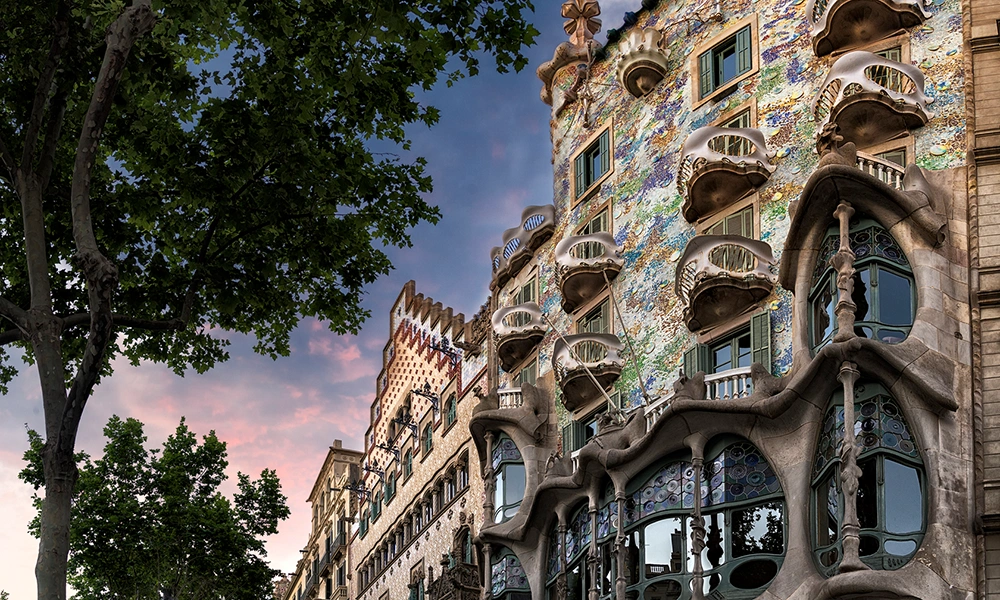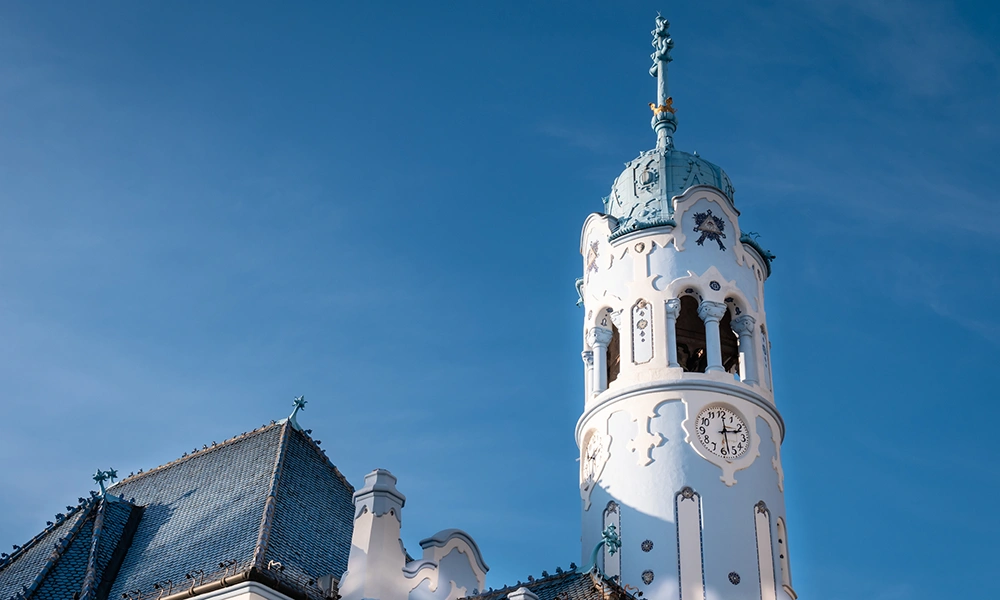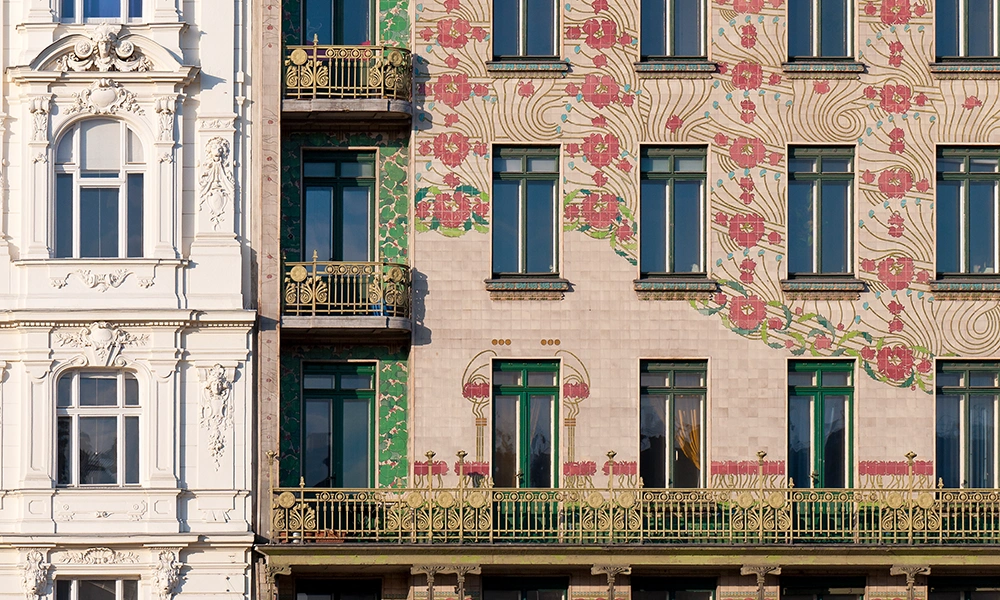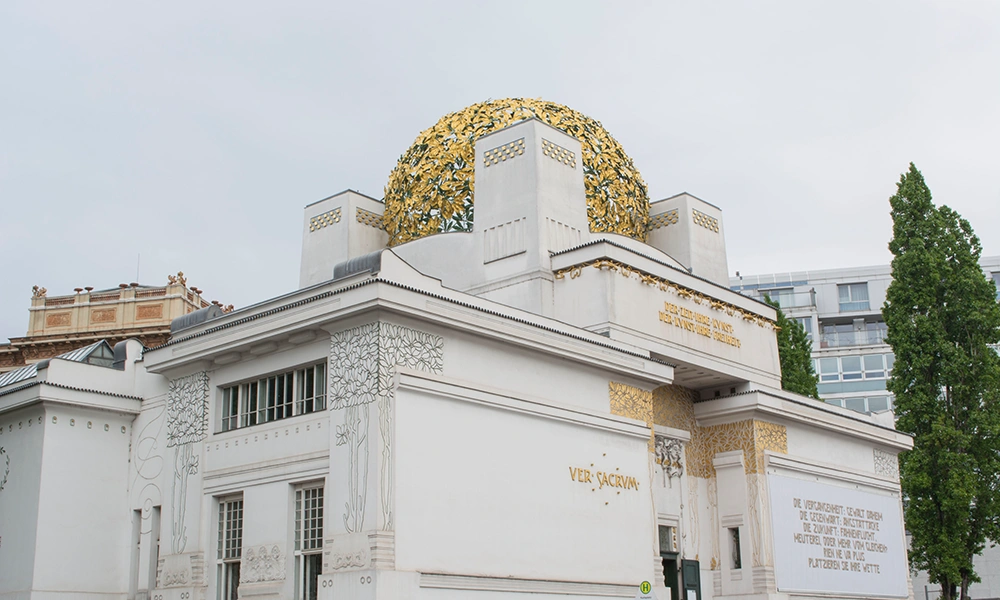
Als „Kunst für jedermann“ hielt der Jugendstil vor gut einem Jahrhundert in vielen Wohnzimmern Einzug. Die Einflüsse dieser kurzen Kunstepoche sind auch in der Architektur sichtbar. Wir zeigen Ihnen, was die „Art Nouveau“ in der Baukunst auszeichnet und woher der Architekturstil kommt.
Fresh, innovative, original: that was the vision of emerging artists at the beginning of the 20th century. With bold shapes and colours, they sought to break down the traditional distinction between aesthetics and functionality. This approach manifested itself in various aspects of life –from jewellery and furniture to outstanding architectural projects.
The origins of art nouveau building
The French term “art nouveau” literally translates to “new art“. As the name suggests, the movement was all about leaving old structures behind. In particular, it took a stance against two dominant influences toward the end of the 19th century:
historicism, i.e. a strong focus on recreating stylistic elements of past epochs
industrialisation, particularly mass production and its impact on society
To counteract these developments, art nouveau architecture and interior design provided an aesthetic that could appeal to everyone: decorative furniture, commodities, and even entire buildings bridged the gap between functional craftsmanship and fine arts. Among architects, the innovative style saw its heyday between 1890 and 1910.

Characteristics of art nouveau architecture
Art nouveau postulated that a building’s purpose should be reflected in its outward appearance. Simply put: by merely looking at the facade, we should already know what awaits us inside. To implement this idea, architects followed a holistic approach that included everything down to the interior design. Facades were often made from sandstone, since the material’s soft texture makes it easy to integrate filigree ornaments. Other typical features of art nouveau houses include:
geometrical shapes
depictions of animals and mythical creatures that symbolise specific virtues
nature-inspired elements, f.ex. structures reminiscent of tendrils, blossoms, or leaves

Famous examples of art nouveau architecture across Europe
Located on a busy street at the heart of Barcelona, the Casa Batlló immediately catches your eye. Spanish architect Antoni Gaudí took on the challenge of completely remodelling the construction in 1904. The result: a stunning interplay of mythical symbolism, dynamic shapes, and sparkling ornaments. Gaudí drew a lot of inspiration from oriental architecture for his art nouveau buildings, as showcased in the colourful facade.
Another striking example can be found in Mannheim, Germany: the so-called Water Tower and its surrounding scenery are one of the main reasons why the city was once called “Little Paris”. With an abundance of fountains and promenades, the place has become a hot spot for locals and tourists alike. The place was first created in 1899 and spans a vast area around the Water Tower. Back then, Berlin-based architect Bruno Schmitz drafted the sketches for the park and arcade constructions. The idyllic ensemble of garden patches, pergola, and arcade fuses art nouveau architecture with baroque elements.
